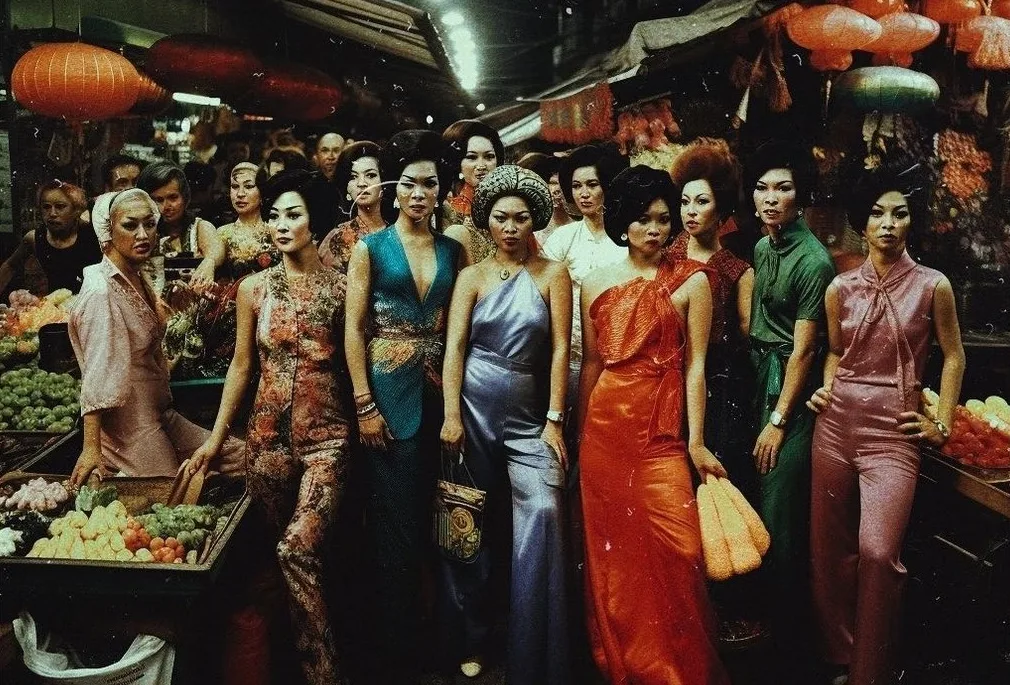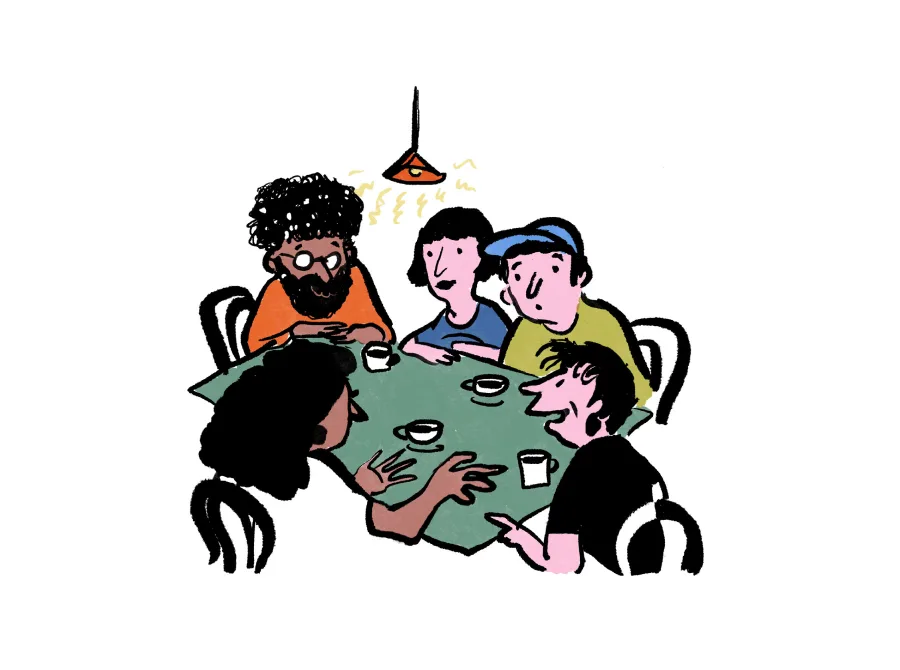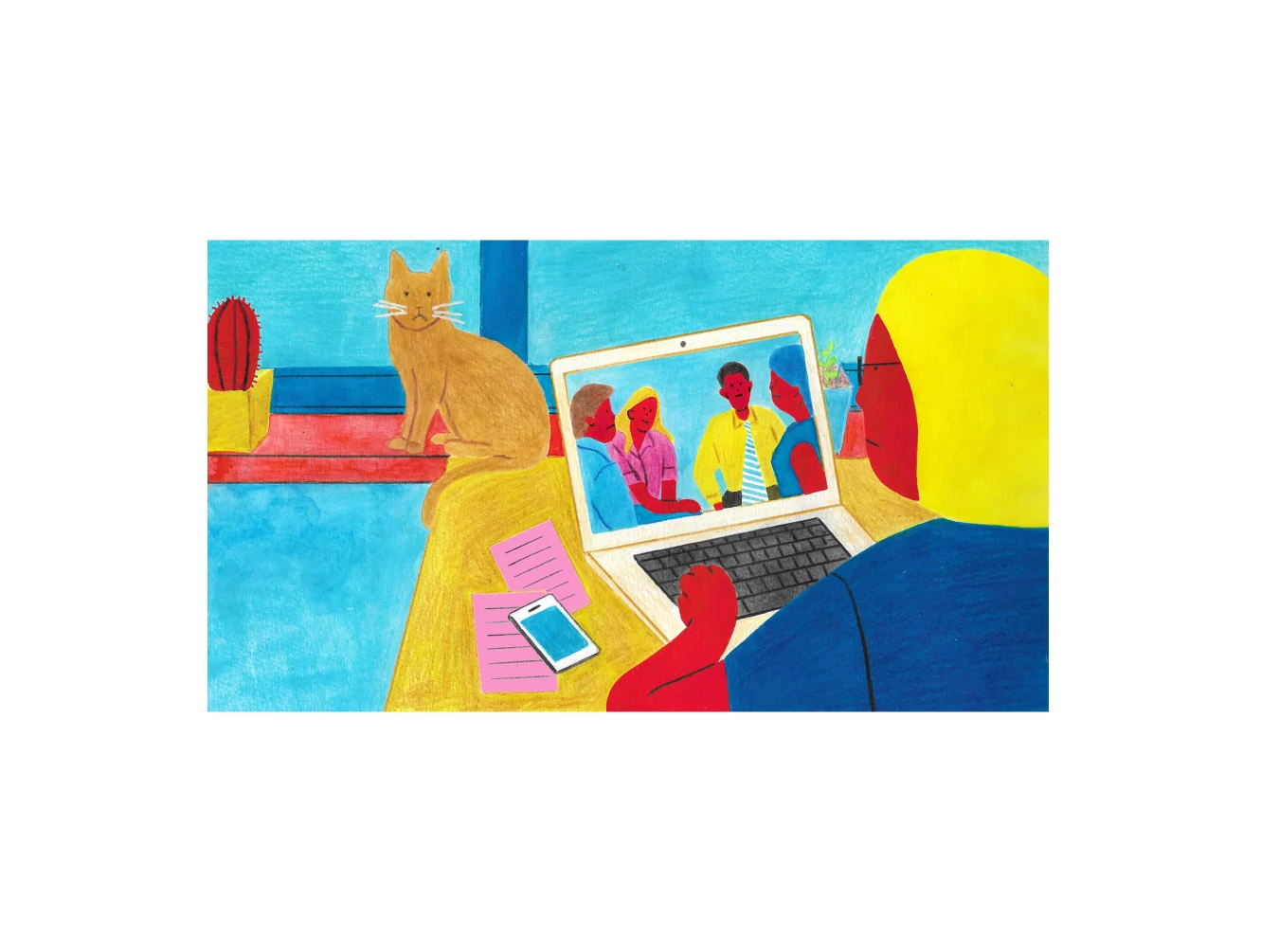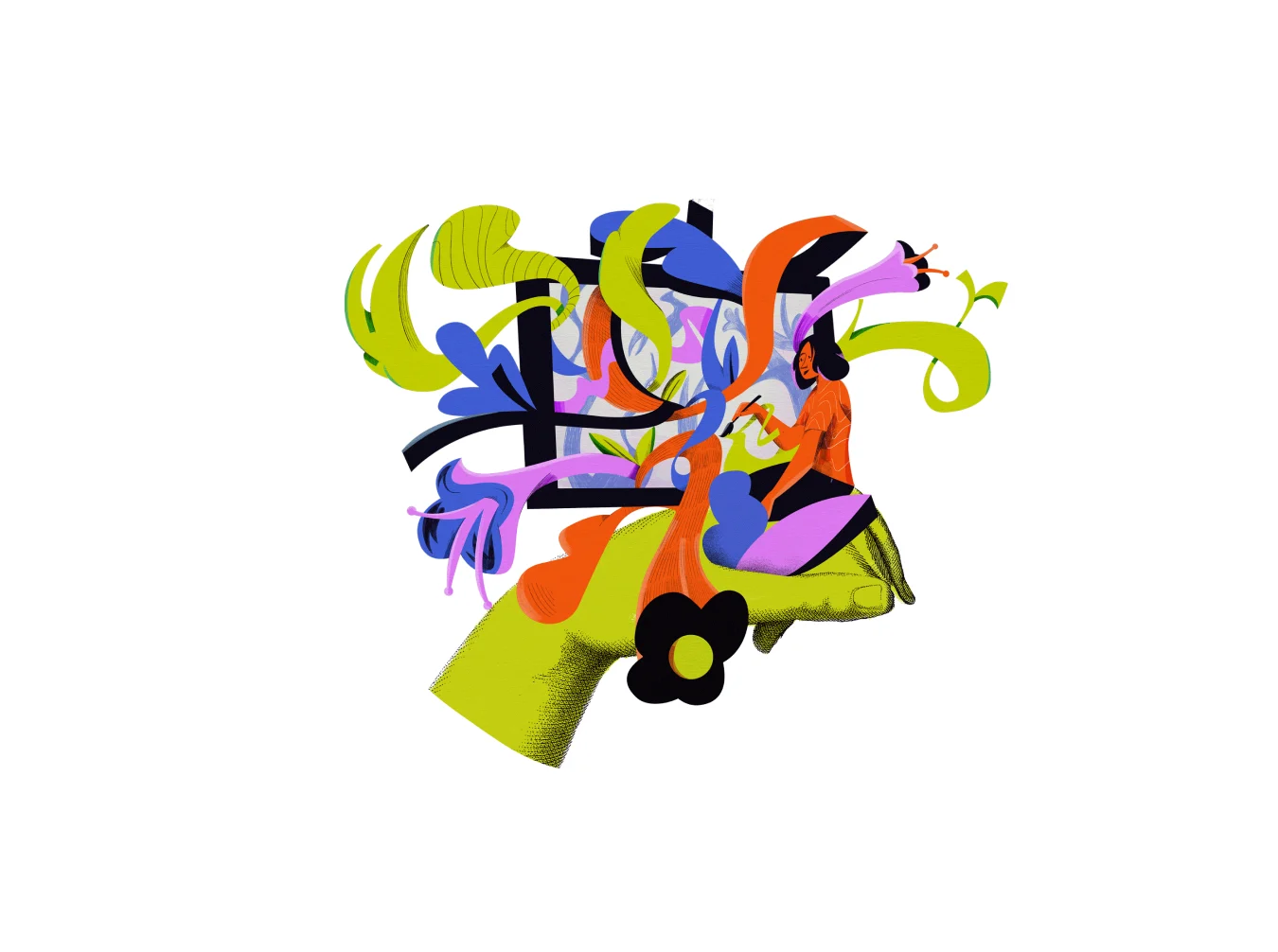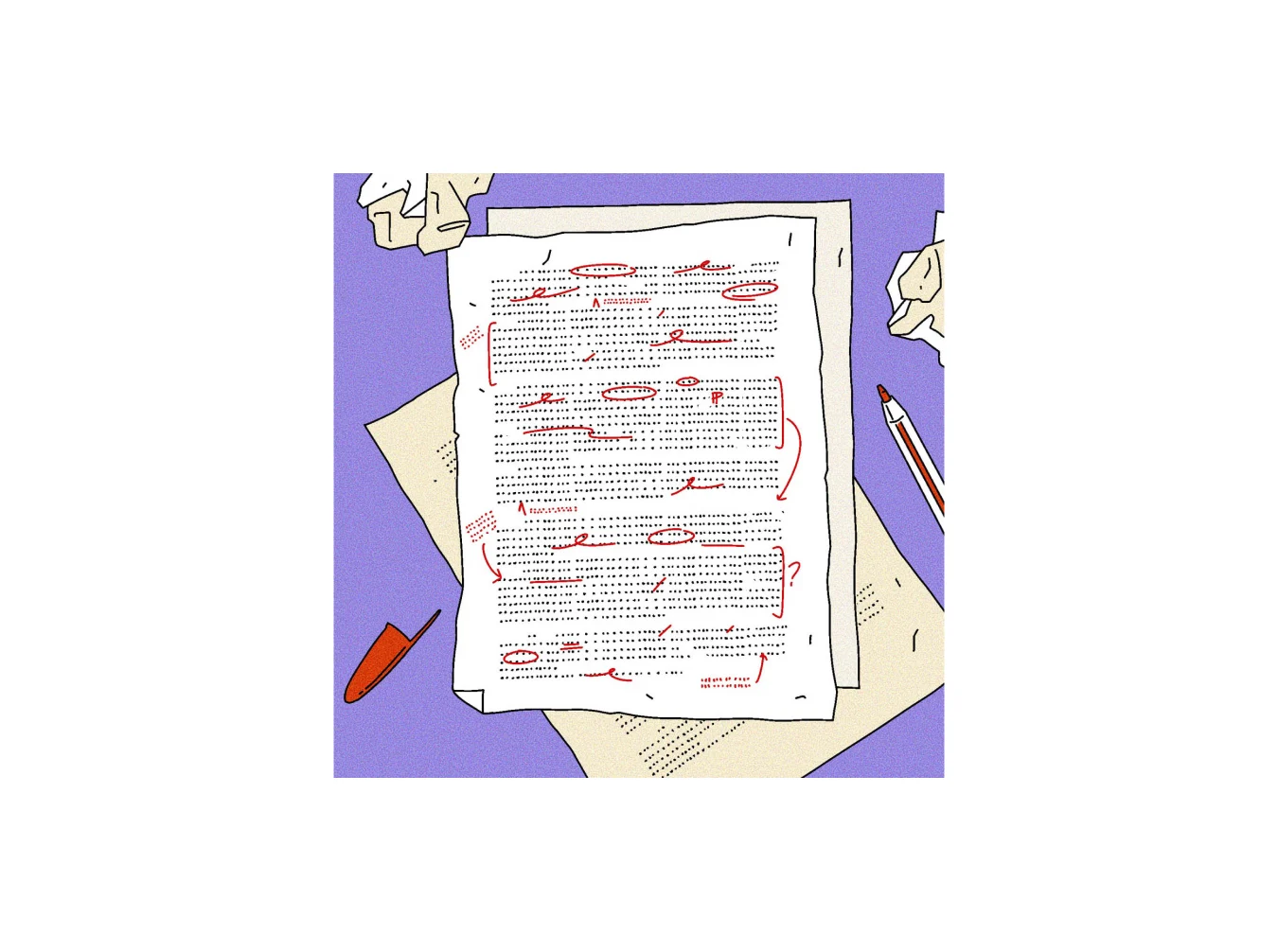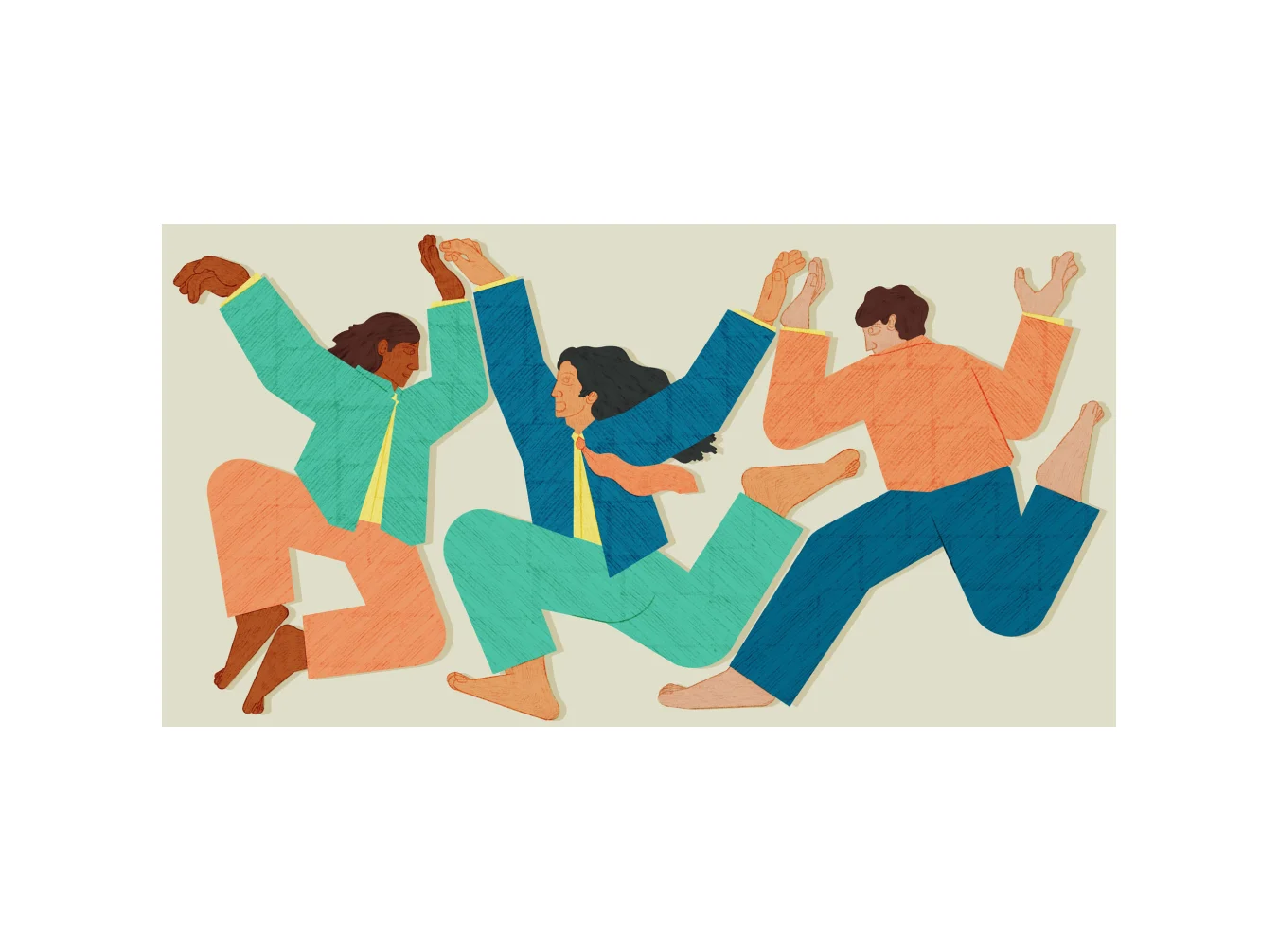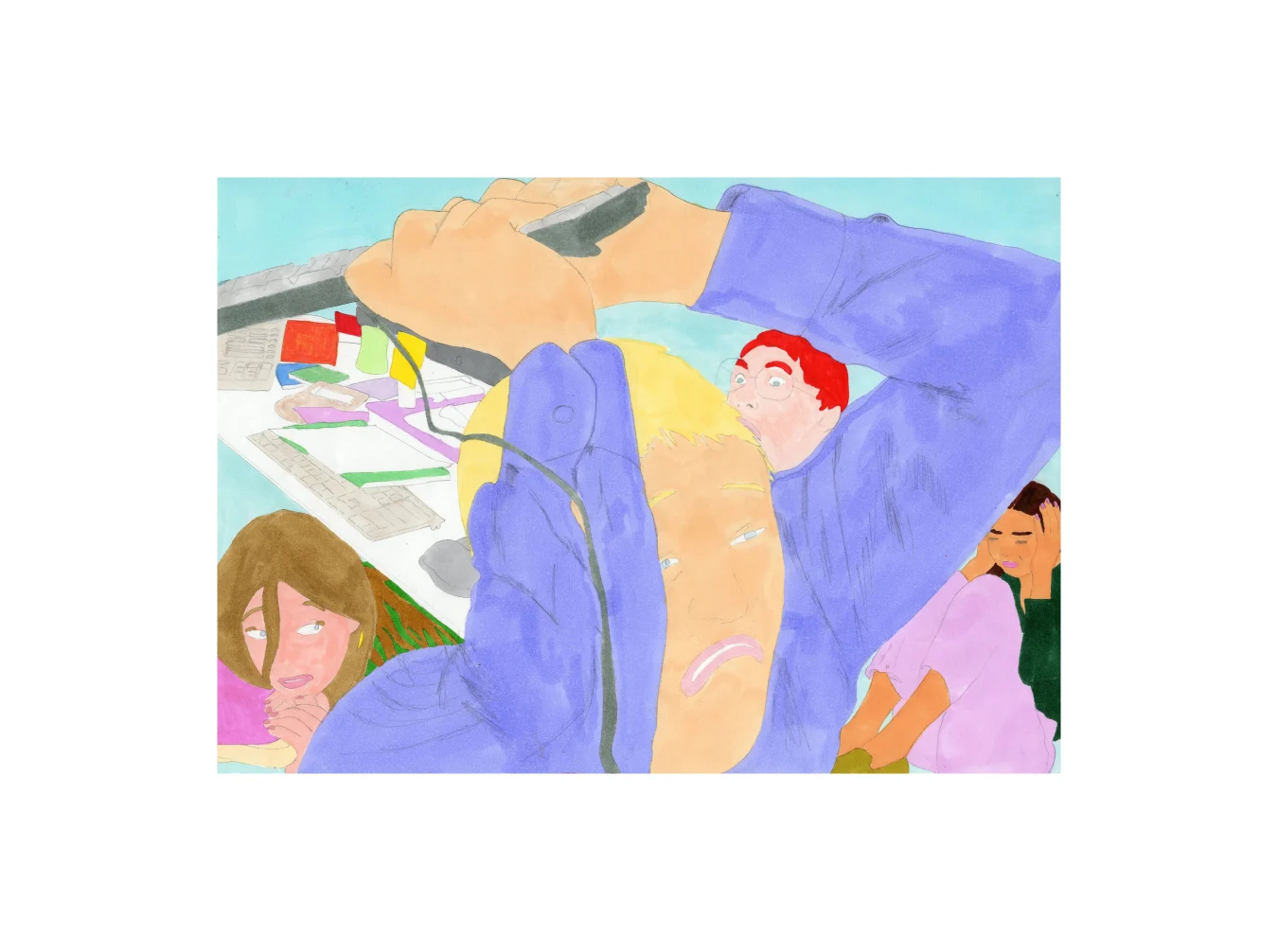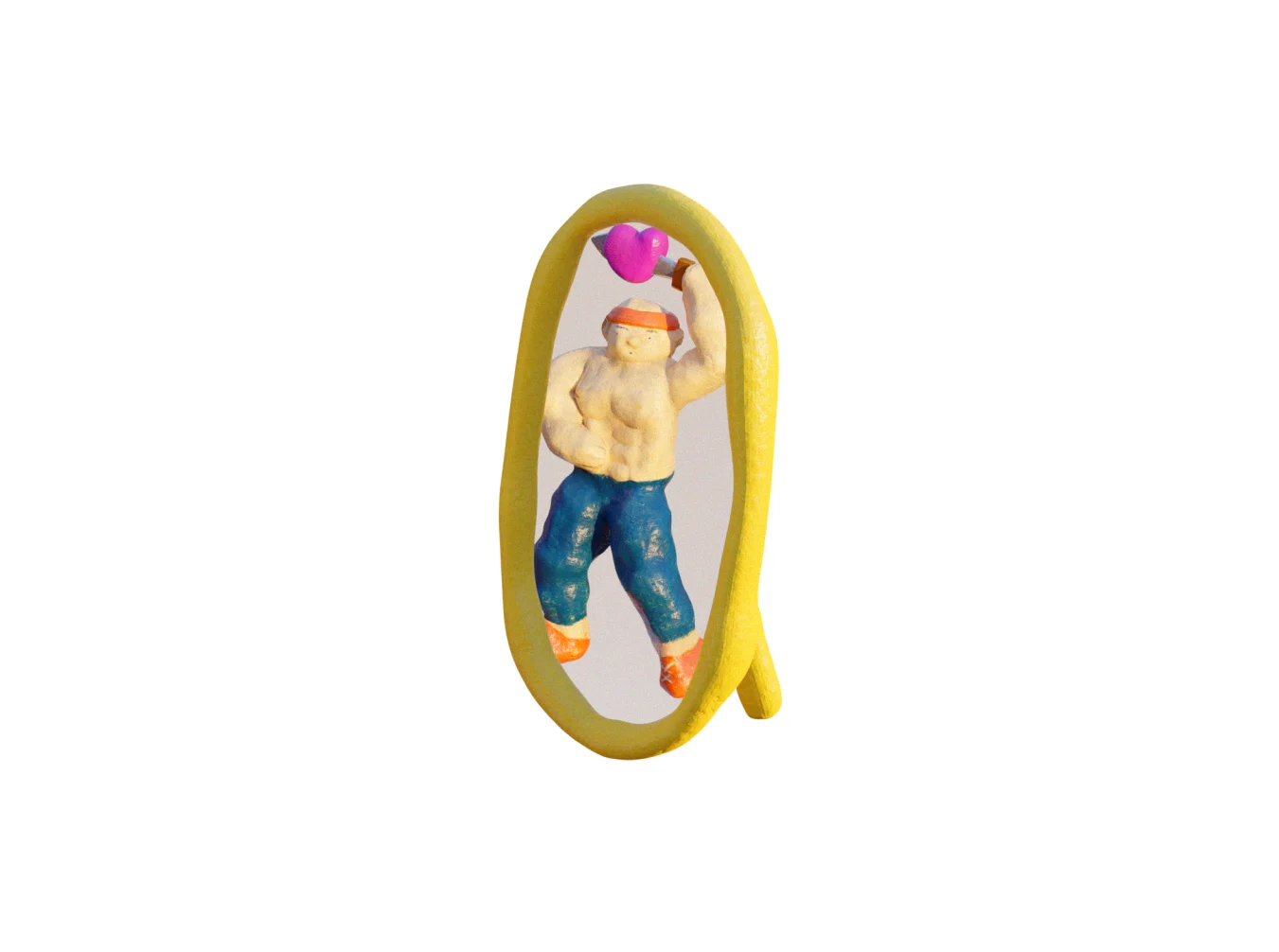

If you believe everything you’ve read online over the past few years, creatives can embrace technological advances to use cryptocurrencies and more to become financially independent, even rolling in money. But what’s the truth behind all that jargon? As writer James Cartwright discovered, a lot of the dislike and distrust of Web3 and crypto is down to the “tech bro” language and overblown dramatics inherent to how it’s spoken about. In fact, this decentralized brand new world shouldn’t be avoided—it presents valid and intriguing opportunities to make money as a creative.
Social platforms have been brimming over with utterly impenetrable #cryptoevangelist posts over the last few years offering everything from blockchain-enabled creative empowerment to the total annihilation of existing financial systems through volatile new cryptocurrencies. You’ve no doubt come across plenty of nonsense like this yourself:
“Sequestering your own data and mining it with decentralized algorithms will replace every middle agency making your life expensive right now.
Decentralized social media will empower this change, reduce friction points, give ultimate transparency and value creatives.
Ask me how it works.”

It's not a new phenomenon, but in recent years the relentless promotion of crypto , blockchain and Web3 technologies as a panacea has reached fever pitch, making it nigh on impossible to discern which platforms, currencies, “founders” and DAO evangelists are legitimate and which just peddle a fantasy. Some, of course, are doing a bit of both.
For the average “very online person” this is simply a minor annoyance, but for the folks currently building useful tools with these technologies, “maxis” (the most die-hard evangelists) risk drowning out the real promise of crypto and blockchain tools—and there does seem to be plenty of promise for creatives who want to use this stuff.
One of the most tangible examples of an artist using blockchain technologies to their advantage comes from David Rudnick. His Tomb Series features 177 unique hyper-real images of the now obsolete minidisc, rendered and recorded in a 244-page hardback book that serves as a physical codex of the body of work. Rudnick released these works of art for sale online across different platforms and with different partners, with the provenance of each recorded across a number of different blockchains. Some “Tombs” only existed digitally (outside of the book, of course), while others were released with original physical assets like one-off screen prints and other merchandise. Some were easy to access, while others required certain actions on the part of the buyer to discover.

An artist versed in this emerging online world can be more than just a creator, they can be promoter, distributor and banker without third parties taking a cut.
If this all sounds complicated, that’s because it’s meant to be—Rudnick loves to add labyrinthine dimensions to his work—but the lesson from Tomb is that an artist properly versed in this emerging online world can be more than just a creator, they can be promoter, distributor, banker and legal team without any third parties taking a cut of the proceeds. And that can only be a good thing.
“I think that a lot of the dislike and distrust of Web3 and crypto is a response to the tone of the discussion,” says Yancey Strickler, former Kickstarter CEO and one of the founding “squad” of Metalabel, a blockchain-enabled platform sharing knowledge, resources and spaces for artists, musicians and other cultural collectives. “It gets talked about in such ridiculous ways that it’s hard not to flinch.”
Strickler has been fully immersed in the Web3 world since stepping down from his post at Kickstarter in 2017, meaning he’s had more snake oil waved under his nose than most. He nevertheless remains a firm believer in the potential of these technologies and their next stage of development, particularly for the power they offer artists and creators. But he warns against believing too much of the hype. “As I ventured in, I kept reminding myself to stay focused on what I knew was real, rather than what people wanted to be real,” he wrote in a 2022 article for Friends With Benefits (FWB), warding people away from a particular genre of Forbes article which baselessly asserts that the future of creativity is inevitably a marriage of Web3 and generative AI.

The current problem with the crypto space isn’t that the technology is fake or even just flawed (although the currency market is extremely volatile and prone to shocks), it’s simply that many of its most ardent supporters are only in it with one end goal in mind: to get rich quick. “Chasing money is not my idea of a good time,” says Strickler, but it’s a big part of the modern human psyche. Sadly, the people who can’t see beyond the dollar signs are missing the best of what this tech could offer.
As well as building the technology to help creatives “create better” in the digital sphere, Strickler and his co-founders at Metalabel are also building the philosophical case for moving away from the isolation and extractivism of the creator economy, which they argue pits artists, musicians, writers and other artistic practitioners against each other while allowing centralized platforms to profit. In their 2022 zine “After The Creator Economy”, they interview numerous creatives disenfranchised with the way their “content” has been commodified by platforms for profit, while those same platforms have simultaneously robbed users of their ability to engage with the artists’ work. The problem with this relationship between artist, platform and consumer in this system is the total lack of transparency in the contracts that bind the three.
For Gudgeon, that’s why the blockchain itself is so exciting—the transparent architecture on which new and more reliable platforms and systems can be built. Gudgeon began his university education just two years after the financial crisis of 2008 and recalls attending a number of lectures that explored the fallout from a philosophical as well as economic perspective. “I remember thinking that the theme of the whole thing was recklessness,” he says, “I had this feeling that the main reason why it all happened was down to a lack of transparency. Once people started to default on their mortgage payments and so on, it was hard for banks to assess the underlying risks of their asset holdings and those of other institutions.”
DeFi or decentralized finance promises to bypass all the shady backroom dealing that Gudgeon believes caused the 2008 crash, and replace intermediaries like banks with automated protocols and smart contracts (algorithms). This enables individuals to transact directly and transparently, with all transactions recorded permanently on the blockchain. “Everything is open and auditable and you can see everything that’s going on,” says Gudgeon. By creating a stable digital currency, Gyroscope hopes to allow individuals to transact and trade on and offline without having to rely on banks and without being exposed to the risks of other volatile crypto assets.

Industries that depend on human creativity have become ever more volatile as a result of corporate greed and the constant devaluation of creative output.
While there has been much talk of reforming the financial sector since 2008, industries that depend on human creativity have become ever more volatile in recent years as a result of corporate greed and the constant devaluation of creative output (witness the recent strikes by the Writers Guild of America, Spotify’s much-condemned decision to give away hundreds of hours of audiobooks without consulting their authors and the shuttering of Bandcamp, one of the last great platforms for discovering new music and the last music journalism platform independent from monopolistic control).
In “After The Creator Economy”, a section titled “Platform Memoriam” looks at the numerous ways that platforms and software companies have restricted user’s access over the years, from the 2009 closure of Geocities, in which hundreds of thousands of users’ data and webpages were lost forever, to Adobe’s 2021 decision to stop running Flash player, which immediately made decades worth of independent games obsolete.
Strickler and Metalabel see an end to all of this, but here, too, the emerging market has been volatile and crowded by the cash-hungry—the value of output like NFTs and other tokens has flip-flopped to such an extent that the idea of investment in these products seems deluded. While Bored Ape Yacht Club NFTs initially sold for $1-3 million, they have drastically depreciated in value since their launch. Six-figure NFTs aren’t what Metalabel is about though, and to talk about them in the same breath is exactly the kind of negative association that Strickler is rallying against.

Like Gudgeon, Strickler is unphased by this early period of boom and bust. Recalling Carlota Perez’s “Technological Revolutions and Financial Capital”, he says, “There’s always an initial bubble as a new piece of technology or infrastructure gets built. If there’s no utility, it crashes. And then there’s a period of time before a different group of people come along and start building on that infrastructure, but for a new kind of purpose.” Once the hype of the emerging crypto markets dies down, he believes the blockchain infrastructure will give way to as yet unimagined areas of innovation.
In the immediate future, the music industry is one field begging for change and seems an obvious place for Metalabel’s values to be put to immediate use. Existing labels have failed to safeguard the revenue of their artists or institute transparent systems of payment, and rentier platforms like Spotify have reduced all but the most regularly-streamed artists’ earnings to peanuts. As Strickler puts it in the above FWB piece, “creators are almost never the owners of the platforms they use” and “platforms certainly didn’t profit-share with creators.” But it’s the creators that bring value to any platform or distribution network.
“Artists aren’t brought into the industry as empowered people,” said Orlando Higginbottom of Totally Enormous Extinct Dinosaurs in a recent interview, “they’re brought along as these sort of fragile, coddled babies who are difficult and creative.” Their managers and labels open them up to exploitation, and money that should be theirs as fair compensation for creative output is scooped up by someone else instead.
There’s always an initial bubble as a new piece of technology or infrastructure gets built.
“So much can happen in the first three years of an artist’s life before they even understand how money gets from Spotify to them,” says Higginbottom. “They might have 10 million monthly streams on Spotify, and they say they don’t really understand. [They] should be buying houses, because somebody’s buying houses from that.”
Blockchains could change all that in any number of different ways: by breaking the monopoly that Spotify and Apple have over music through the interoperability of platforms—something that Strickler says is fundamental to the principles of Metalabel; by creating more transparent payment and contractual systems between labels and artists; and by widening distribution of an artist’s music by strengthening their community of fans and rewarding them for their fandom.
How exactly this shakes down is a matter for speculation—although Metalabel’s “New Creative Era” zine elaborates more on how this might come about—but it’s clear that if you can look past the hyper-capitalist phase of the crypto-project that we’re currently in, the “quasi-socialist” principles that underpin blockchain’s infrastructure and modes of organization and distribution offer exciting alternatives to a number of broken systems to which creatives are bound. And then perhaps we could stop calling everything “content”.

